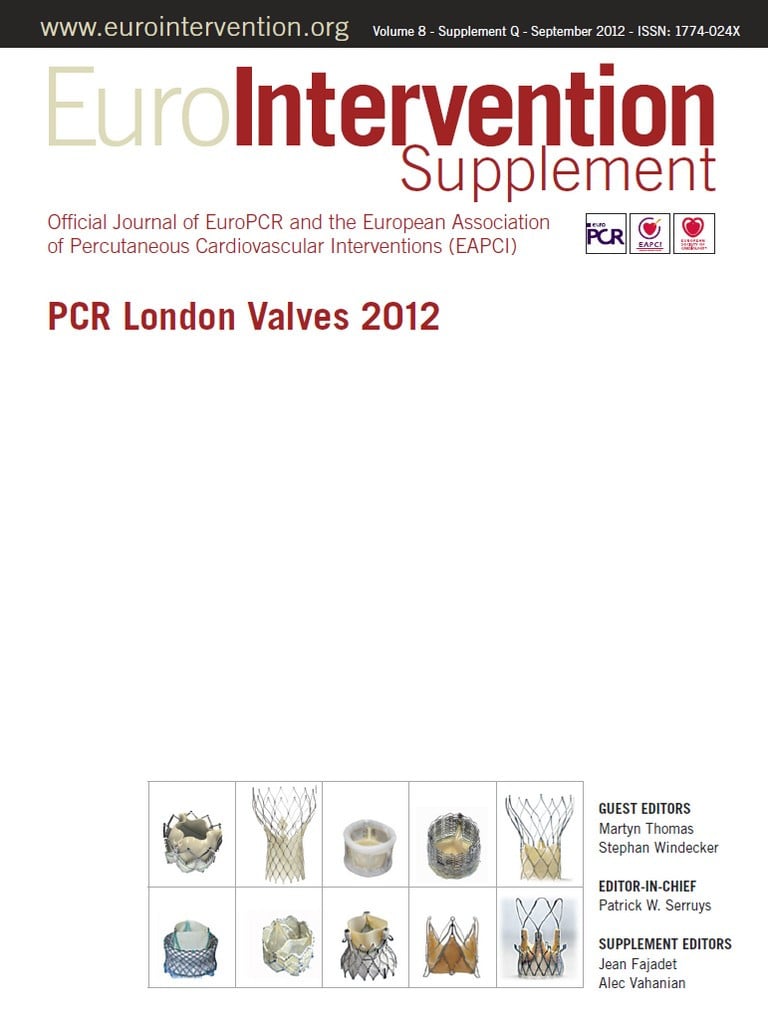![]()
Vascular access in TAVI
Transcutaneous aortic valve implantation using the left carotid access: feasibility and early clinical outcomes
Aims: In some patients, transfemoral or transaxillary percutaneous aortic valve implantation is not possible. Thus, carotid artery access may represent a safe alternative to the femoral and subclavian access even offering certain advantages. In this article, we describe aortic valve implantation using the left carotid arterial approach and report our experience.
Methods and results: Using a self-expandable nitinol-based device (CoreValve ReValving System, Medtronic Ltd, Luxembourg) we exposed the left carotid artery through a small incision. Arterial puncture and initial 6 Fr sheath introduction were achieved through a contra-incision. The same implantation technique used for transaxillary implantation was used. Progressive artery dilatation was achieved using sheaths of increased diameter. Rapid ventricular pacing was used to reduce cardiac output while performing a routine aortic balloon valvuloplasty. Only then was an 18 Fr sheath inserted into the carotid artery and pushed down into the ascending aorta. The patients were monitored using cerebral oxymetry to assess cerebral perfusion. Thirty-two consecutive patients at high surgical risk were implanted and studied prospectively. Transfemoral and subclavian catheterisation were considered unfeasible or at risk of severe complications. Carotid arterial injury did not occur in any patient. A transient ischaemic attack (TIA) occurred in one patient contralateral to the carotid access. Paravalvular leak, as assessed by angiography and echocardiography controls, was trivial (grade 0-1) in all patients. There were no intraprocedural deaths. One patient needed a pacemaker implantation (3.1%).
Conclusions: This initial experience suggests that left carotid transarterial aortic valve implantation in selected high-risk patients is feasible and safe with satisfactory, short-term outcomes. No death occurred in the 30-day follow-up period.

